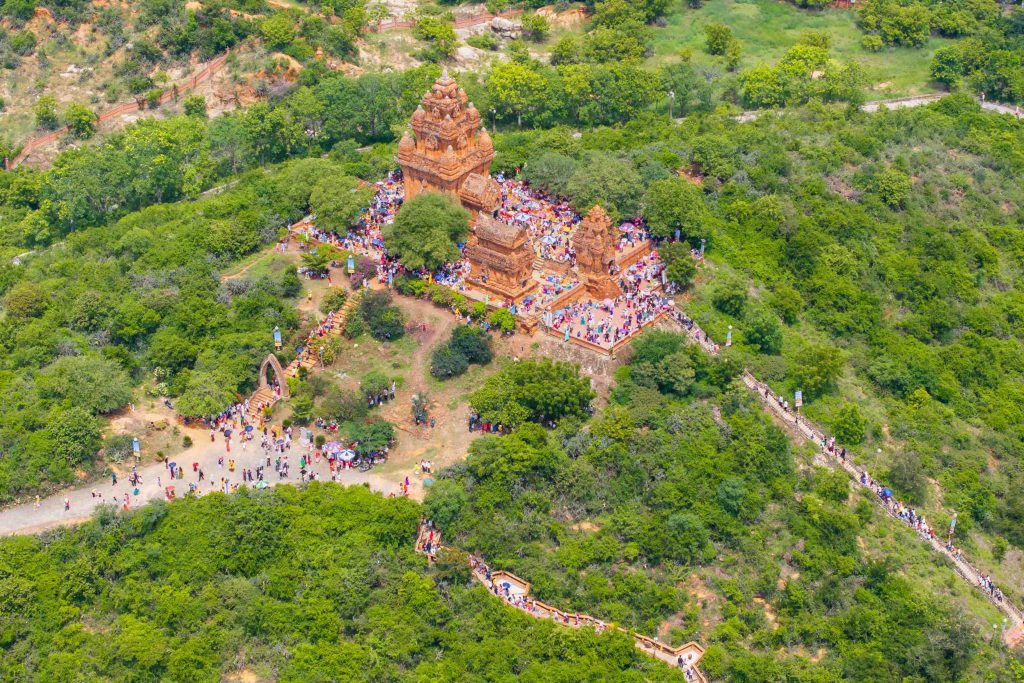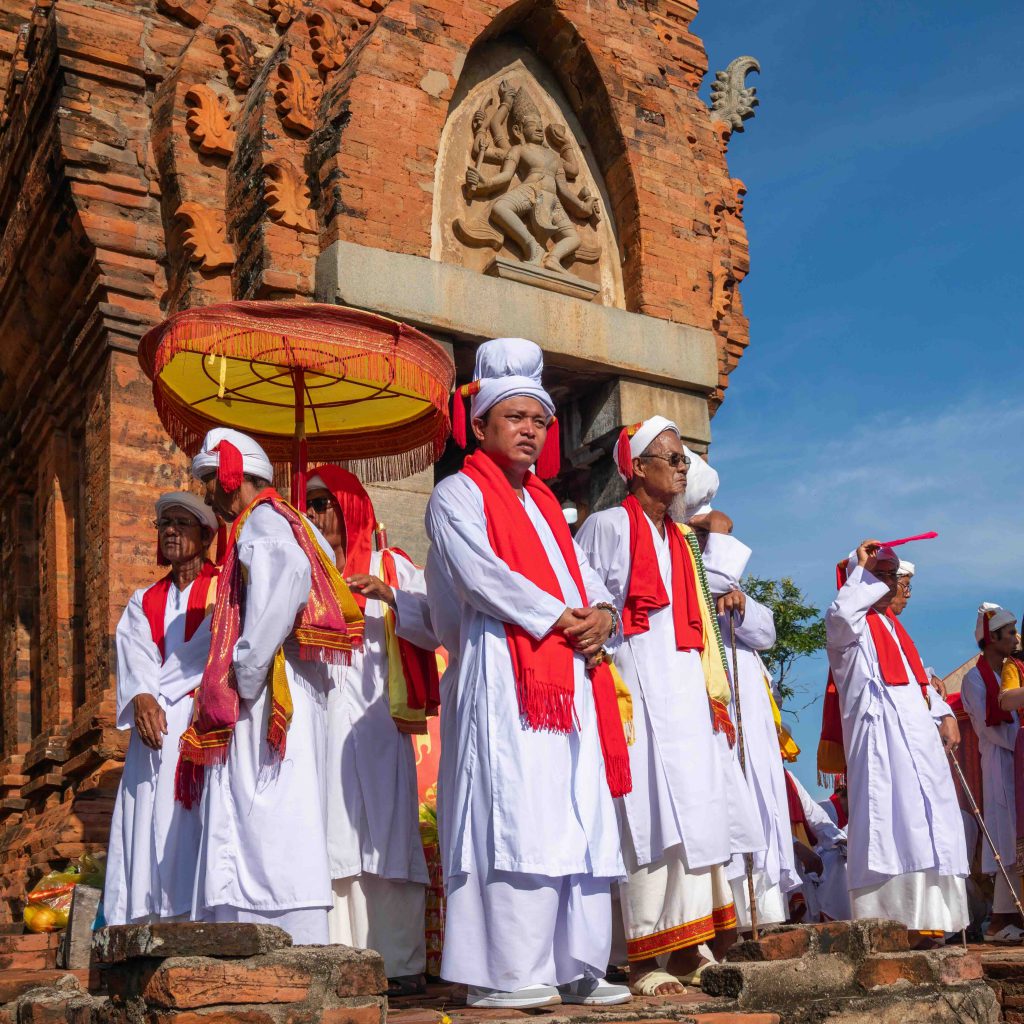Story: Nguyen Phuoc Bao Dan
Photos: Long Ho
“Light fragrant agarwood in the incense burner,
Open the stone door of the sacred Po Klong Garai Tower, ayet,
Light agarwood at the altar and bring betel offering trays,
Open the door of the divine Po Klong Tower, ayet…”
Accompanied by the sounds of the Kanyi instrument, Master Kadhar performs songs praising the deities, marking the start of the Kate Festival, a key ritual of the Cham people in South Central Vietnam.

Rituals to express gratitude
The Kate Festival typically takes place in the seventh month of the Cham calendar, around late September to early October in the Gregorian calendar. The festival is held at three temple towers that once belonged to the ancient Panduranga kingdom in present-day Khanh Hoa and Lam Dong provinces: Po Ina Nagar Tower (Phuoc Huu, Khanh Hoa), Po Klong Garai (Do Vinh, Khanh Hoa), and Po Rome (Phuoc Huu, Khanh Hoa).
According to a Cham-French Dictionary compiled in 1906 by French scholars E. Aymonier and A. Cabaton, the term “Kate” originates from “Katik” in Hindu culture, a worship ceremony held in the seventh month of the Cham calendar. Kate also carries the broader meaning of rituals to commemorate ancestors, deities, and kings who contributed to the country and were deified, as well as prayers for favorable weather for Cham farmers and those who work at sea.
Before the festival day, both Cham and Raglai people hold rituals to welcome and escort the ceremonial garments. Raglai people belong to the Malayo-Polynesian language family and live in mountainous areas in the west of present-day Khanh Hoa and Lam Dong provinces. Raglai villagers from La A village in Dong Ninh Hoa, Khanh Hoa, are responsible for bringing Po Ina Nagar’s attire to the temple tower, while Raglai from Phuoc Ha and Phuoc Huu carry the garments of Po Rome and Po Klong Garai.
The traditional garments include skirts, shirts, scarves, hats, bracelets, and golden earrings, preserved by the Raglai community since ancient times. On the main festival day, items such as bowls, cups, and dishes made of bronze, silver, and gold, along with traditional offerings like goats, bananas, betel nuts, corn, beans, and sticky rice, are solemnly brought to the temple towers.
According to Cham legends, the Cham and Raglai people are siblings. The Cham are the elder sister, and the Raglai are the youngest sibling. According to their matrilineal system, the youngest daughter inherits property, keeps family treasures, and serves the ancestors. Therefore, it’s the Raglai people who hold the royal Cham garments in the temple towers.
Offerings used in the worship ritual include goat meat, rice, soup, wine, and fruits. Accompanied by the Kanyi instrument, also known as the Rabap, Master Kadhar sings songs praising the deities. Meanwhile, Master Camanei, the ritual assistant, and Mrs. Bajau, who burns incense to purify the temple tower, ask the god Po Ginuer Mancri (Shiva) for permission to open the tower. This is followed by the ritual bathing of the deity statue, dressing the deity, and finally, the grand ceremony.
Skilled musicians playing Ginang drums, Baranung drums, Hagar, Saranai horns, gongs, rattles, Asang (bamboo flutes), Tangek (percussion instruments made of two wooden sticks), and Ma la (Raglai musical instruments) serve as catalysts, enhancing the sacred atmosphere inside the mysterious towers. After Mrs. Bajau’s sacred dance concludes, the Kate Festival begins at the village and family level.

Vibrant village festivals
As well as being an ancestral gratitude ritual held by the Cham community in Vietnam’s sunny and windy South Central region, the Kate is also a festival celebrated by villages, families, and individuals. Before the festival, young Cham women in My Nghiep village prepare threads and weaving frames to compete in making colorful brocade pieces. In Bau Truc pottery village, clay and firing materials are prepared to produce the famous Cham pottery. In other villages, competitions where women carry pottery jars on their heads while moving quickly in traditional ao dai further highlight the important role of women in Cham society.
Visiting Cham villages in South Central Vietnam during the Kate Festival, you can experience a variety of rich folk cultural and artistic activities and discover this distinctive indigenous culture.
Those eager to explore will encounter a living cultural treasure, from legends about kings to stories of the Earth God (Po Bhum), Rice Goddess (Yang Sri), Sky God (Po Lingik), River God (Yang Patao Aia), and more. Colorful clothing, belts, headscarves, seashell horns, Kanyi instruments made from turtle shells, and other items all reveal how generations of Cham people, who have been part of this region since ancient times, adapted to their coastal environment.










